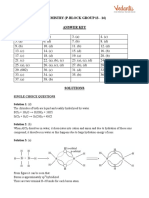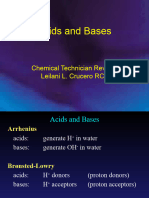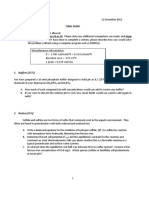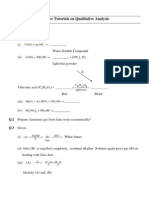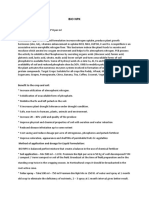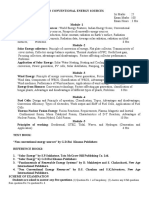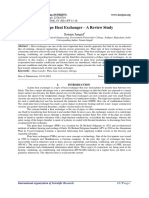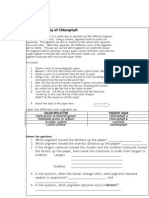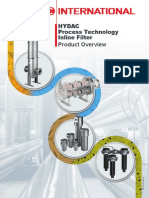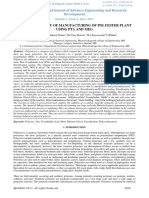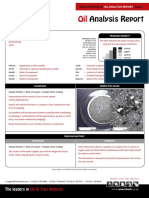ASSIGNMENT 3 SOLUTIONS Comprehension -1 For structures, refer the attached appendix (A) Hypo phosphorus acid = H3PO2 (B)
) Per phosphoric acid = H3PO5 (C) Chlorous acid = HClO2 (D) Hypo chlorous acid = HOCl (E) Chloric acid = HClO3 (F) Per chloric acid = HClO4 (G) Per sulphuric acid = H2SO5 (Caros acid) (H) Meta Boric acid = HBO2 (I) Pyro Boric acid = H4B2O7 (J) Meta sulphurous acid = SO2 (It is not an acid, it is an oxide, so meta form of sulphurous acid does not exit) (K) Meta sulphuric acid = SO3 (It is not an acid, it is an oxide, so meta form of sulphuric acid does not exit) (L) Pyro sulphurous acid = H2S2O5 (M) Meta Phosphorus acid =HPO2 (it exists in polymer form as (HPO2)n) (N) Pyro Phosphorus acid = H4P2O5
Comprehension-2 Complete the following hydrolysis reactions
No reaction (1) NF3 + H2O
N(OH)3 + HF HNO2 + H2O N2O3 +H2O (2) NF3 + H2O (superheated steam)
No reaction (3) CCl4 + H2O
�(4) CCl4 + H2O (superheated steam) COCl2 + HCl (5) BeCl2 + H2O Be(OH)2 + HCl (6) BCl3 + H2O B(OH)3 + HCl (7) BF3 + H2O B(OH)3 + HBF4 {Balanced reaction is 4BF3 + 3H2O B(OH)3 + 3HBF4. This is partial hydrolysis as out of 4 moles of BF3, only one mole of BF3 gives the hydrolysed product because HF produced during hydrolysis reacts with BF3 itself to give HBF4. Hence BF3 is not available for further Hydrolysis} (8) SiCl4 + H2O Si(OH)4 + HCl (9) SiF4 + H2O Si(OH)4 +H2[SiF6] {Balanced reaction is 3SiF4 + 4H2O Si(OH)4 + 2H2[SiF6]. This is partial hydrolysis as out of 3 moles of SiF4, only one mole of SiF4 gives the hydrolysed product because HF produced during hydrolysis reacts with SiF4 itself to give H2[SiF6]. Hence SiF4 is not available for further Hydrolysis} (10) NCl3 + H2O NH3 + HOCl
P(OH)3 + HCl (11) PCl3 + H2O
(12) AsCl3 + H2O As(OH)3 + HCl (13) SbCl3 + H2O SbOCl (orange turbidity ) + HCl (14) BiCl3 + H2O BiOCl (white turbidity) + HCl (15) SF4 + H2O H2SO3 + HF
No reaction due to steric crowding (16) SF6 + H2O
H2SO4 + HCl (17) SO2Cl2 + H2O H2SO4 + H2O2 (18) H2SO5 + H2O
H2SO5 + H2SO4 H2SO4 + H2O2 (19) H2S2O8 + H2O
HClO2 + HF (20) ClF3 + H2O
�(21) BrF5 + H2O HBrO3 + HF (22) IF7 + H2O HIO4 +HF (23) P4 + H2O H3PO4 (24) P4O10 + H2O H3PO4 (25) PCl5 + H2O H3PO4 + HCl (26) XeF2 + H2O Xe + HF + O2 (27) XeF4 + H2O Xe + XeO3 + HF + O2 (28) XeF6 + H2O XeO3 + HF (29) Be2C + H2O Be(OH)2 + CH4 (30) CaC2 + H2O Ca(OH)2 + C2H2 (31) Mg2C3 + H2O Mg(OH)2 + C3H4 (32) Al4C3 + H2O Al(OH)3 + CH4 (33) LiH + H2O H2 + LiOH
H2 + LiOH + Al(OH)3 (34) LiAlH4 + H2O
(35) Ca3N2 + H2O NH3 + Ca(OH)2 (36) Ca3As2 + H2O AsH3 + Ca(OH)2 (37) CaNH + H2O NH3 + Ca(OH)2
NH3 + Mg(OH)2 (38) Mg3N2 + H2O
�Q.1 (c) {see figure, only 3 P-P bonds are present}
Q.2 (a) and (b) {Two B atoms are sp2 and two B atoms are sp3 hybridized} Borax is Na2B4O7.10H2O. But its actual formulae is Na2B4O5(OH)4.8H2O. Hence it has two Na+, 8 H2O molecules and [B4O5(OH)4]-2 ion.
Its aqueous solution behaves like a acidic buffer solution as Na2B4O5(OH)4 + 5H2O Q.3 Q.4 2 B(OH)3 + 2 NaB(OH)4 {Solution of weak acid and its salt}
(a) = (p), (b) = (q), (c) = (r), (d) = (s) Refer the attached appendix








